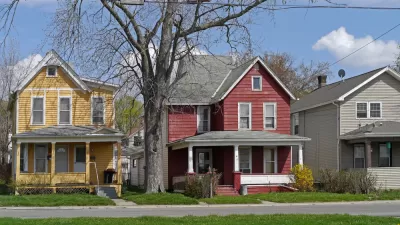Using homeownership as an asset-building mechanism and retirement plan might not be a great thing for our society.

Robert Wassmer and Imaez Wahid set off a bit of a firestorm several months ago with an ill-considered article in Housing Policy Debate that asked whether NIMBYism might actually be “rational” in a world where “likely residents of affordable housing” might actually lower property values. In other words, if the world discriminates, it becomes rational for supposedly non-biased homeowners to do so as well, since other people’s beliefs will affect their property values.
I’m not going to get into a thorough debunking of their argument and policy proposal, because three published responses do the job quite thoroughly: “Comment on ‘Does the Likely Demographics of Affordable Housing Justify NIMBYism?’” by J. Rosie Tighe and Edward G. Goetz; “Affordable Housing and Its Residents Are Not Pollutants,” by Mai Thi Nguyen and Corianne Payton Scally; and, for the scholars, “A Methodological Critique of Wassmer and Wahid,” by Philip M. E. Garboden and Prentiss A. Dantzler. They are currently free to download, but that might be temporary.
The extremely short version is:
- If you don’t carefully or accurately define “affordable housing” or the demographics of who lives in it, then you can’t measure its effect on home prices. (Oh, and you ignored a ton of literature that says it doesn’t have an effect.)
- If you ignore the history behind discriminatory land use and credit policies, you will misinterpret the reason for lower home prices in areas with certain demographics and therefore inaccurately predict how current changes in demographics will affect other areas.
- Using language that gives any credence to inaccurate associations between, for example, crime and affordable housing, is incredibly harmful, even in theory.
(You can also see Wassmer’s response to the feedback here.)
One thing that struck me about this whole kerfuffle, though, is that it’s a good example of why using homeownership as an asset-building mechanism and retirement plan might not be a great thing for our society.
FULL STORY: Time to Delink Homeownership from Asset Building

Alabama: Trump Terminates Settlements for Black Communities Harmed By Raw Sewage
Trump deemed the landmark civil rights agreement “illegal DEI and environmental justice policy.”

Planetizen Federal Action Tracker
A weekly monitor of how Trump’s orders and actions are impacting planners and planning in America.

The 120 Year Old Tiny Home Villages That Sheltered San Francisco’s Earthquake Refugees
More than a century ago, San Francisco mobilized to house thousands of residents displaced by the 1906 earthquake. Could their strategy offer a model for the present?

Ken Jennings Launches Transit Web Series
The Jeopardy champ wants you to ride public transit.

BLM To Rescind Public Lands Rule
The change will downgrade conservation, once again putting federal land at risk for mining and other extractive uses.

Indy Neighborhood Group Builds Temporary Multi-Use Path
Community members, aided in part by funding from the city, repurposed a vehicle lane to create a protected bike and pedestrian path for the summer season.
Urban Design for Planners 1: Software Tools
This six-course series explores essential urban design concepts using open source software and equips planners with the tools they need to participate fully in the urban design process.
Planning for Universal Design
Learn the tools for implementing Universal Design in planning regulations.
Clanton & Associates, Inc.
Jessamine County Fiscal Court
Institute for Housing and Urban Development Studies (IHS)
City of Grandview
Harvard GSD Executive Education
Toledo-Lucas County Plan Commissions
Salt Lake City
NYU Wagner Graduate School of Public Service





























